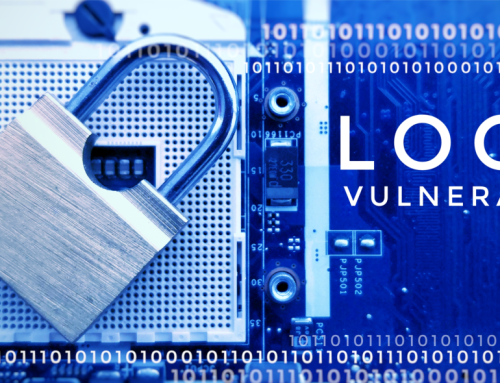Zero-trust is somewhat confusing if you’re not sure about what point of view to take. The easiest way to begin to understand the concept is to look at it as an approach to security. It’s not a product, but it’s more about how you practice and put your security policies in place.
Zero-Trust Solutions Sounds Like a Product
By now, you’ve may have heard the phrase “zero-trust solutions,” and that’s what makes you question whether it’s a product. It is not a product. If someone is trying to sell you a product, that’s a major red flag.
The short and simple explanation is that the solution includes many techniques to enforce a zero-trust security setup. Tools like single sign-on (SSO) or multi-factor authentication (MFA) are part of how you enable zero trust.
Do not listen or pay attention to vendors that want to sell a zero-trust solution as though it is a thing. It’s not a product they can install. It’s about how you operate as a business and keep your information secure. Products can have zero-trust features. Zero trust is a practice and principle.

Zero-Trust Solutions Sounds Like a Product
By now, you’ve may have heard the phrase “zero-trust solutions,” and that’s what makes you question whether it’s a product. It is not a product. If someone is trying to sell you a product, that’s a major red flag.
The short and simple explanation is that the solution includes many techniques to enforce a zero-trust security setup. Tools like single sign-on (SSO) or multi-factor authentication (MFA) are part of how you enable zero trust.
Do not listen or pay attention to vendors that want to sell a zero-trust solution as though it is a thing. It’s not a product they can install. It’s about how you operate as a business and keep your information secure. Products can have zero-trust features. Zero trust is a practice and principle.


Zero Trust As a Mindset
Traditional security practice includes safe and unsafe zones. Firewalls were responsible for allowing or denying traffic through. The approach sounds good on paper and is generally effective. But, there would still be problems that would make their way through the firewall.
For example, it is impossible to guarantee that all emails with malware attached will never make it through. It’s all about definitions. Think of it like spell check in a Word document. You try to spell a word, and it’s not in the dictionary. Microsoft Word may or may not flag it as a spelling error. Firewalls may also allow things through if they are not in the ACL because they can accept unknown packets by default.
While firewalls can be effective in many situations, they are not foolproof. They are not always configured the same way and may allow packets through. They have limitations. Instead of having safe or unsafe zones, the idea is always to assume that there is no safe zone. Authentication is necessary for every single event under a zero-trust policy. If someone wants to request access, they must authenticate first to get the access.

Zero Trust As a Mindset
Traditional security practice includes safe and unsafe zones. Firewalls were responsible for allowing or denying traffic through. The approach sounds good on paper and is generally effective. But, there would still be problems that would make their way through the firewall.
For example, it is impossible to guarantee that all emails with malware attached will never make it through. It’s all about definitions. Think of it like spell check in a Word document. You try to spell a word, and it’s not in the dictionary. Microsoft Word may or may not flag it as a spelling error. Firewalls may also allow things through if they are not in the ACL because they can accept unknown packets by default.
While firewalls can be effective in many situations, they are not foolproof. They are not always configured the same way and may allow packets through. They have limitations. Instead of having safe or unsafe zones, the idea is always to assume that there is no safe zone. Authentication is necessary for every single event under a zero-trust policy. If someone wants to request access, they must authenticate first to get the access.
Assume Nothing, Verify Everything
The internet has become an extension of your network at work. That means the internet needs to be considered an untrusted network as not everyone has a VPN. You wouldn’t allow just anyone to access your sensitive data — the same stands for your online presence.
Every access request must ask for verification, even more so from people working remotely. It becomes second nature in a zero-trust setup that security teams must authenticate and verify every single time.
You must never assume that the access request is legitimate every time. If a user is successful in authenticating once, that user must go through the process again. It allows for security to catch digital changes that can be present as a result of hidden malware.

To put it in simple terms, imagine this: employees must show an ID to enter the building. A zero-trust setup means employees are checked and verified every time they walk into a building. It does not matter how many times they enter.
Assume Nothing, Verify Everything
The internet has become an extension of your network at work. That means the internet needs to be considered an untrusted network as not everyone has a VPN. You wouldn’t allow just anyone to access your sensitive data — the same stands for your online presence.
Every access request must ask for verification, even more so from people working remotely. It becomes second nature in a zero-trust setup that security teams must authenticate and verify every single time.
You must never assume that the access request is legitimate every time. If a user is successful in authenticating once, that user must go through the process again. It allows for security to catch digital changes that can be present as a result of hidden malware.

Least Privilege
The bottom line with assigning access is to ensure that if someone doesn’t need to access data, then they don’t get the privilege of getting to it. It’s pretty standard practice, too. You only ever assign access to people who need it and then watch for any activity that seems out of the ordinary, like unexpected changes to the configuration.
Zero trust includes least privilege as the best practice approach. You want to move users toward having the least number of privileges to complete tasks, job duties, or other obligations. It’s also a good idea to delete unnecessary accounts to reduce any existing unused privilege.
Least Privilege
The bottom line with assigning access is to ensure that if someone doesn’t need to access data, then they don’t get the privilege of getting to it. It’s pretty standard practice, too. You only ever assign access to people who need it and then watch for any activity that seems out of the ordinary, like unexpected changes to the configuration.
Zero trust includes least privilege as the best practice approach. You want to move users toward having the least number of privileges to complete tasks, job duties, or other obligations. It’s also a good idea to delete unnecessary accounts to reduce any existing unused privilege.

Don’t Believe Everything You’re Told
Just because a partner tells you that everything is secure, that doesn’t mean it’s as secure as it could be. A security team worth its weight can’t ever assume that data is secure without actually checking it. Good security teams check and recheck everything to make sure you’re always up to date.
In times past, security was often agreed upon as trusting users based on their location. With so many working remotely these days, that model has fallen by the wayside. Systems cannot be trusted based on location and ensure that malware is nonexistent without putting zero-trust protocols in place.

Don’t Believe Everything You’re Told
Just because a partner tells you that everything is secure, that doesn’t mean it’s as secure as it could be. A security team worth its weight can’t ever assume that data is secure without actually checking it. Good security teams check and recheck everything to make sure you’re always up to date.
In times past, security was often agreed upon as trusting users based on their location. With so many working remotely these days, that model has fallen by the wayside. Systems cannot be trusted based on location and ensure that malware is nonexistent without putting zero-trust protocols in place.
A Frictionless Experience is a Must
Users don’t like things to be difficult or complex when it comes to security issues. At the same time, you’ve got SSO, MFA, and identity management, all of which are part of the zero-trust you’re aiming for.
So, how does all that pan out? Looking back, originally, you had a password to access data. Later, you had hardware security tokens, but those were a pain to deal with. Now, you’ve got application-based authentication because it’s easy. Everyone has a smartphone these days, and it’s much more effective than text messages. Some places also use biometrics, but for the everyday user, authentication tools are much better than they were years ago.
In the perfect planned-out solution, users never know that zero trust is even in place unless security identifies a severe threat or risk. You’ve probably even seen it in action and never realized it was happening. Think about when you sign on to your Google account from an unknown device or location and then get a message on your phone asking you to verify that it’s you signing on. That’s zero trust in action.

A Frictionless Experience is a Must
Users don’t like things to be difficult or complex when it comes to security issues. At the same time, you’ve got SSO, MFA, and identity management, all of which are part of the zero-trust you’re aiming for.
So, how does all that pan out? Looking back, originally, you had a password to access data. Later, you had hardware security tokens, but those were a pain to deal with. Now, you’ve got application-based authentication because it’s easy. Everyone has a smartphone these days, and it’s much more effective than text messages. Some places also use biometrics, but for the everyday user, authentication tools are much better than they were years ago.
In the perfect planned-out solution, users never know that zero trust is even in place unless security identifies a severe threat or risk. You’ve probably even seen it in action and never realized it was happening. Think about when you sign on to your Google account from an unknown device or location and then get a message on your phone asking you to verify that it’s you signing on. That’s zero trust in action.


Educate Everyone Involved
While management needs to know what’s going on behind the scenes, security pros need to keep things easy to understand. The truth of the matter is that security teams have always operated from a reactive stance. It’s what management expects. It’s what they think is the way things are supposed to be, but with zero-trust principles, that changes.
Instead of being reactive, security teams need to be proactive to keep workers productive in a safe and secure way. Zero trust is the best choice since it allows people to work from home and authenticate using mobile apps. The bottom line is that for a company to be productive, they have to allow their workforce to do so safely and securely. More frequently, that points to zero trust all the way.

Educate Everyone Involved
While management needs to know what’s going on behind the scenes, security pros need to keep things easy to understand. The truth of the matter is that security teams have always operated from a reactive stance. It’s what management expects. It’s what they think is the way things are supposed to be, but with zero-trust principles, that changes.
Instead of being reactive, security teams need to be proactive to keep workers productive in a safe and secure way. Zero trust is the best choice since it allows people to work from home and authenticate using mobile apps. The bottom line is that for a company to be productive, they have to allow their workforce to do so safely and securely. More frequently, that points to zero trust all the way.
Understanding Risk and Implementing Zero Trust
Your security team should always keep an eye on things. It is a good idea to create a risk model that allows for ongoing traffic monitoring. It’s vital to identify a risk as soon as possible. For example, if access points change, you need to ask the question that determines if the risk is different. Did someone steal a device, or did the employee travel to a new location?
Remember, you need to question everything and assume nothing to be 100% safe. Zero trust is just that – no trust for anyone who requires access. There are no safe zones. There are only unsafe zones. Users must authenticate every single time to ensure a secure environment for data.

Understanding Risk and Implementing Zero Trust
Your security team should always keep an eye on things. It is a good idea to create a risk model that allows for ongoing traffic monitoring. It’s vital to identify a risk as soon as possible. For example, if access points change, you need to ask the question that determines if the risk is different. Did someone steal a device, or did the employee travel to a new location?
Remember, you need to question everything and assume nothing to be 100% safe. Zero trust is just that – no trust for anyone who requires access. There are no safe zones. There are only unsafe zones. Users must authenticate every single time to ensure a secure environment for data.

If you have any questions about how a zero-trust environment would work or if you’d like some assistance with implementing zero-trust principles in your business, give us a call. IT Done For You would be happy to help!
Share This Story, Choose Your Platform!
Let’s have a 15-minute video call
We are now taking on new clients.





